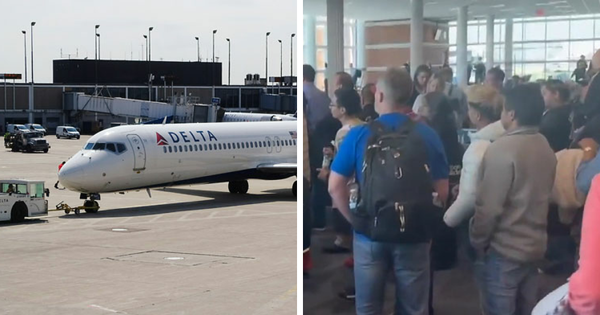
Colin Whitaker would happily have spent his life as a country vet, caring for farm animals near his home in Kent, and never coming to public notice beyond his local area. But a dogged determination to find answers to puzzling questions raised by his bovine patients catapulted him into the limelight in 1987 after he reported the first documented cases of what became known as mad cow disease, or BSE. He has died aged 83.
The disease became a cause célèbre in veterinary health, with more than 4 million cattle eventually being sent for slaughter. Already a politically explosive issue, it became even more so when in 1996 the first cases of variant Creutzfeldt-Jakob disease (vCJD) in humans were linked to eating infected meat – but not until more than a year after people had started to die. British beef was banned from export for at least a decade, forcing the agriculture industry to face the disastrous consequences of feeding herbivores such as cattle and sheep on high-protein concentrates containing the rendered carcases of sick animals.
In April 1985, Whitaker was called to see a cow on a dairy farm in Kent. The previously biddable cow refused to come into the milking parlour, tried to kick the cowman and was hypersensitive to touch – which suggested a neurological condition.
Within three months she was dead. It was unlike anything Whitaker had seen before. After encountering further cases on the same farm, in 1986 he contacted his local Veterinary Investigation Centre (VIC) at Wye College. An officer there, Carl Johnson, sent three of the cows’ brains to the Central Veterinary Laboratory (CVL) of the Ministry of Agriculture, Fisheries and Food (Maff, now Defra) for pathological analysis, and helped Whitaker to prepare a report. The CVL identified the condition as a new disease – bovine spongiform encephalopathy – but did not communicate that conclusion to Whitaker and Johnson, reporting the pathology results only as “spongiform change” in the brains.
Whitaker described what he tentatively called “chronic hypersensitivity and incoordination syndrome” in nine cows and one bull to the annual congress of the British Cattle Veterinary Association (BCVA) in July 1987, supported by Johnson’s analysis of the pathology lab results on the brains of three animals.
“The dominant symptom,” he said, “was of a behavioural change from a quiet, placid cow to a hyperaesthetic, apprehensive animal which also developed a degree of incoordination ... eventually leading to a loss of weight and recumbency.” He had carefully recorded the age, parentage, housing and diet of the affected cattle in the hope of finding a link. But he drew a blank, apart from the fact that most of them were between four and six years old. This was the first time the existence of what became known as BSE had been publicly announced.
In the audience was David Bee, a vet from Sussex. He immediately told Whitaker that he had seen the same thing in several cattle at a single farm in his neighbourhood, and had reported it to his local VIC. The cow he saw in December 1984, known as Cow 133, is now acknowledged to be the first documented case. Six more cows on the same farm had died by the end of April 1985, but after that Bee had seen no more cases before hearing Whitaker’s talk.
What neither vet knew at the time was that officers within Maff had already been instructed to play down any idea that a new disease was taking hold in the British dairy herd. Whitaker had originally created a slide for his talk including, as the last among 17 possibilities, that the disease might be a “new (scrapie-like) syndrome”.
Scrapie is a fatal disease of sheep that had been endemic in the British flock for centuries, with similar brain pathology and symptoms to BSE. As Whitaker later told the BSE inquiry, held between 1998 and 2000, “someone senior in Maff” (he did not know who) asked to see his slides before the talk and instructed him to remove the words “scrapie-like”. He was not happy, but as his co-author Johnson worked for Maff, he reluctantly agreed.
As later came out at the inquiry, Maff continued to try to keep a lid on public communication about the disease, in the mistaken belief it was protecting British agriculture. Not until 1988 were orders brought in banning the use of animal products in cattle feed, and not until August that year did it become compulsory to report and slaughter infected animals, with a compensation scheme.
By that time hundreds of probable cases had been reported. Meanwhile there had been nothing to stop diseased or undiagnosed cattle going into the human food chain. Despite efforts by government ministers to reassure shoppers that “British beef is safe to eat”, eventually 178 people, mostly young, died from the human form of the condition in the UK. The damage to public trust in government was incalculable.
Born in Bromley, Kent, Colin was one of three children of Chris Whitaker, a welfare officer, and his wife, Doris (nee Collett), who cared for the home and family. Colin lived in Kent all his life, attending a local primary school, followed by Chatham House grammar school in Ramsgate. He went to London to study veterinary science and qualified from the Royal Veterinary College in 1965. Joining a practice in Ashford, Kent, he remained there until his retirement as senior partner in 2001, specialising in large farm animals.
He joined the council of the BCVA after his conference presentation, and served as its president in 1995–96. He was elected to an honorary fellowship in 2013.
Bestowing an honorary degree from the Royal Veterinary College on Whitaker in 2015, its senior vice-principal Professor Stephen May described him as “a dedicated and not so ordinary man who spent a lifetime practising in the trenches.”
After his retirement, Whitaker volunteered with local organisations, including a museum and an air show. He enjoyed good food and wine, and made regular day trips to Calais to visit his favourite restaurant.
Whitaker married Jennifer Martin immediately on qualification in 1965 and they had two sons. She died in 2023 and a son, Michael, also predeceased him. He is survived by his son Ian and grandsons Harry and Thomas.
• Colin James Whitaker, veterinary surgeon, born 19 June 1941; died 6 March 2025







